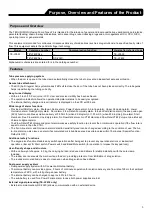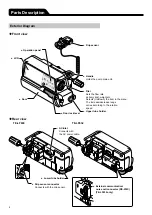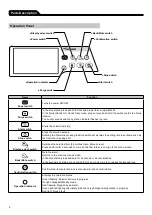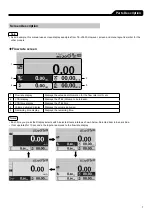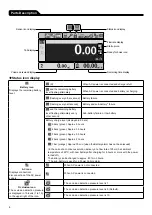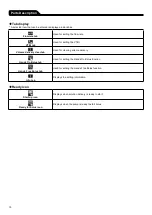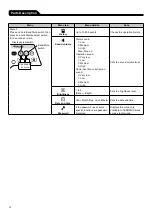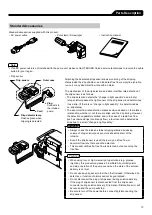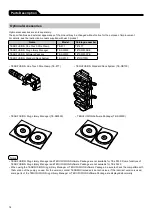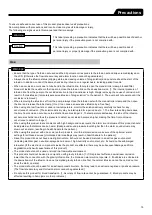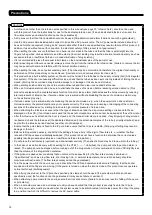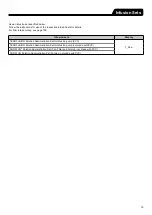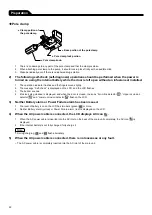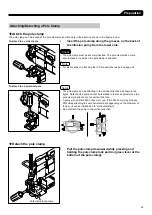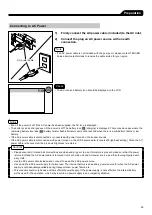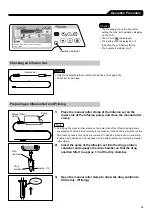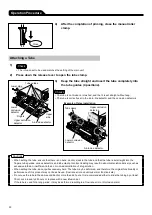
15
To ensure safe and correct use of this product, please observe all precautions.
Non-compliance with precautions and incorrect use may result in damage or injury.
The following are signs used in this manual and their meanings:
Warning
This label preceding a precaution indicates that there will be a possible risk of death or
personal injury if the precaution given is not complied with.
Caution
This label preceding a precaution indicates that there will be a possible risk of
personal injury or property damage if the precaution given is not complied with.
Use
Warnings
• Ensure that the type of infusion set used and the drip volume corresponds to the infusion set and drip volume displayed on
the LCD. [Otherwise the flow rate accuracy and alarm function cannot be guaranteed.]
• Always check the infusion status (dripping status, decreasing volume of drug solution) and puncture site at the start of the
infusion. In addition, conduct the same check during infusion on a regular basis, including patient rounds.
• When an occlusion occurs due to tube bend in the infusion line, failure to open the manual roller clamp, blocked filter,
blood clot inside the needle or other reasons, close the infusion line on the downstream side. [1. The internal pressure of
infusion line from the pump to the occluded section in the downstream is high. Simply removing the cause of occlusion will
result in “bolus infusion (temporaly excessive infusion of drug solution)” to the patient. 2. The pump will not operate until the
occlusion is removed.]
• When removing the infusion set from the pump, always close the infusion set with the manual roller clamp and then open
the door and release the tube clamp. [If not, it can cause an excessive infusion by a free flow.]
• When using at a low flow rate or under a low temperature, monitor the solution delivery carefully to check for any
occurrence of occlusion. [The solution delivery may be interrupted for a period due to: 1. The flow rate setting decreases,
the time from occlusion occurrence to detection becomes longer. 2. The temperature decreases, the tube of the infusion
set becomes harder and thus the pressure to detect an occlusion becomes higher, making the time from occlusion
occurrence to detection longer.]
• When using this product in environments with high background noise levels, the alarm sound volume of this product should
be adjusted so that alarms can be heard. [Background sound pressure levels higher than the alarm sound volume may
drown out an alarm, resulting in health hazard to the patient.]
• When using this product with one or more other products, or with a similar device, make sure of the optimum alarm
settings for all those devices. [Unintended alarm settings may result in health hazard to the patient.]
• Since this product does not have an airtight structure, it should not be used or stored in an active gas environment
(including sterilizer gas), nebulizer-sprayed environment, high-humidity environment, etc. It should not be submerged
into water. [If the electronic components inside the product are affected, there may be subsequent damage and time
degradation which will cause failure of this product.]
• The product should not be used or stored in a flammable environment.
• This product should not be used in conjunction with gravity infusion. [1. If this product suffers a downstream occlusion
lower than the connection with the gravity infusion line, the Occlusion alarm will not operate. 2. If bubbles are entrained in
the downstream of the infusion line due to emptied gravity infusion line first, the normal infusion cannot be carried out nor
does the alarm operate.]
• The product should not be used for an extracorporeal circuit etc. that may lead to an extreme negative or positive pressure.
[The flow rate accuracy and Occlusion alarm cannot be guaranteed.]
• Do not use this product for blood transfusion. [1. Accuracy of flow rate cannot be guaranteed. 2. Blood products may be
affected resulting in hemolysis or other problems.]
Precautions



